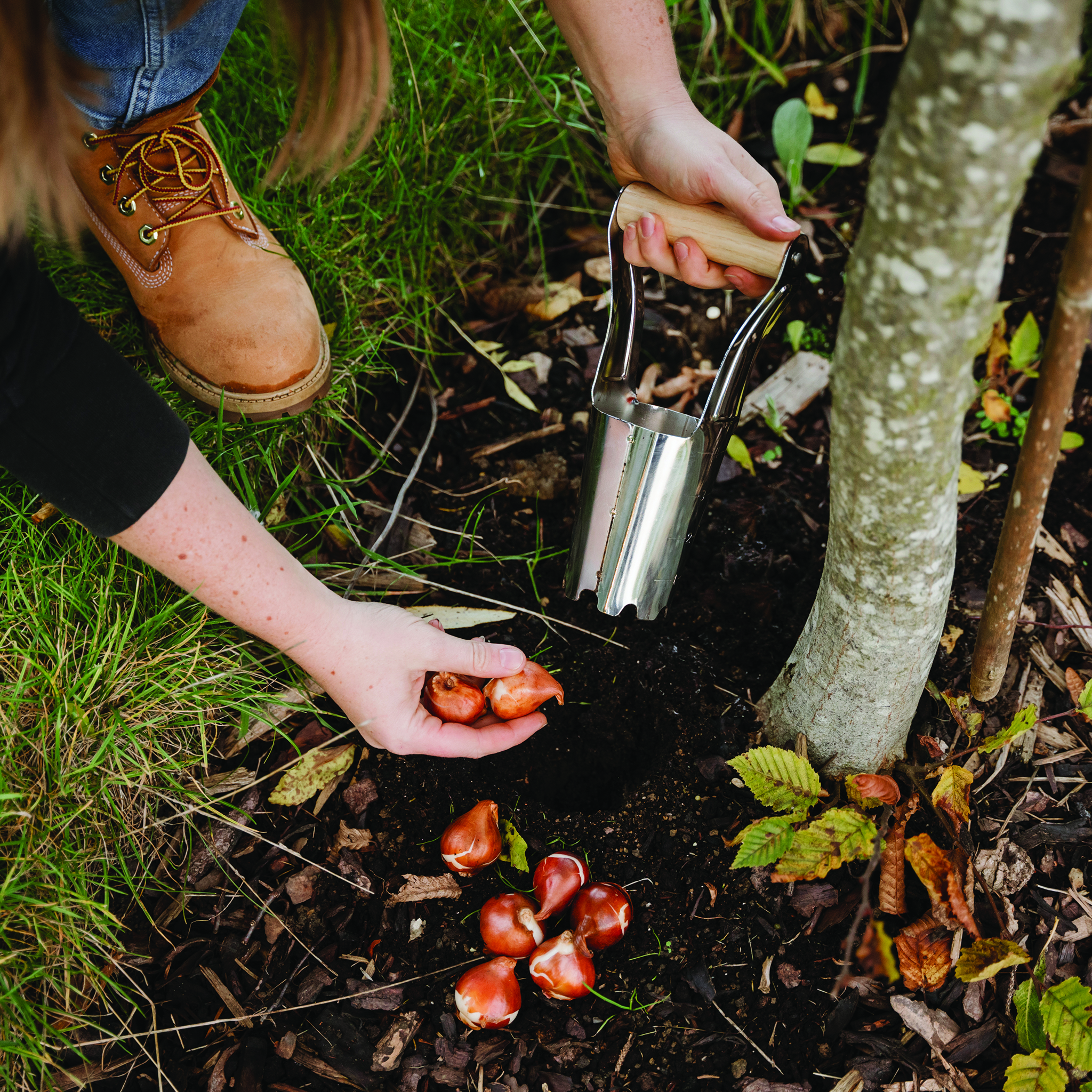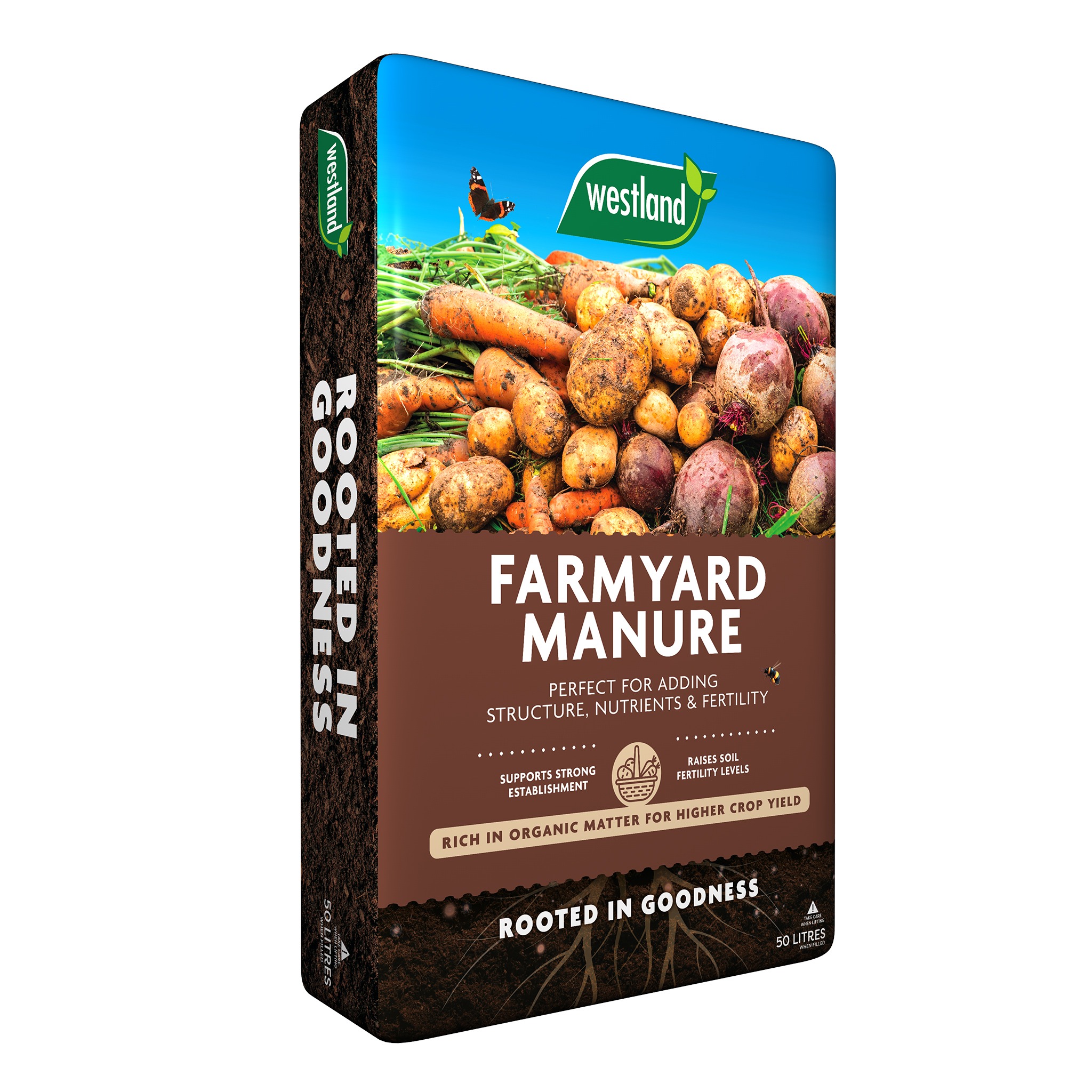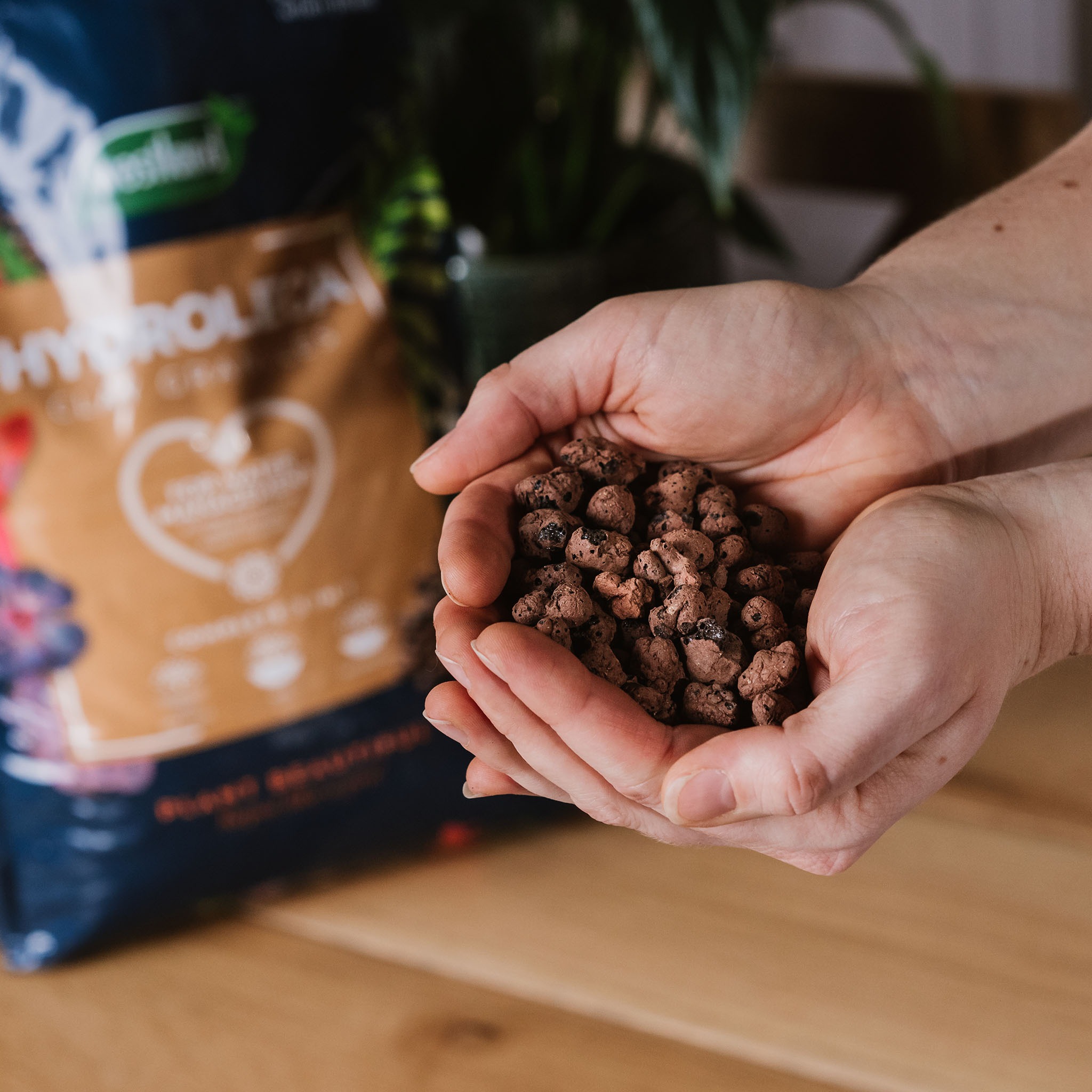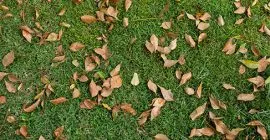When fireworks light up the night skies and crowds huddle for warmth around crackling bonfires, it’s a signal to get the garden ready for winter. Despite the cold temperatures and shorter days can still pot up some colourful winter containers, start planning next year’s garden, and of course feed your garden birds! Let’s take a look at what garden jobs can be ticked off this November…
There’s still some colour to be found among leaves and berries. Winter-flowering shrubs such as Mahonia media hybrids, winter Honeysuckle, and Viburnum Bodnantense will bring gorgeous fragrance to the short days.
Try and spend a little time tidying up your borders – you’ll be pleased you did when spring comes round. This is a good time of year to plant shrubs. Our Westland Tree & Shrub Planting Mix will give them a boost with its balanced nutrient fertiliser that feeds for up to 6 months and added root builder for healthy plants.
Essential checklist for November gardening jobs
- Clear up fallen leaves and compost them
- Plant shrubs, evergreens, and conifers
- Protect tender plants from frost with fleece or plant jackets
- Put out bird food to encourage birds to visit the garden
- Plant out winter bedding
- Adjust your houseplant care routine
- Mulch to protect and nourish your plants
Last chance
- Feed the lawn with an autumn feed
- Plant spring-flowering bulbs such as tulips
- Plant garlic and onions
Clear leaves and compost them
Leaf mould is worth its weight in gold, so it’s well worth collecting up leaves to make your own. Contain the leaves in a simple open frame made of chicken wire, or pack them into black bin bags, or even an empty compost bag. Sprinkle with Garotta, moisten the leaves, and tie them up. Leave the bags for a couple of days before piercing all over with a garden fork. Then move out of the way to a shady place and leave for a year by which time the leaves should have rotted down to a rich, dark, pleasant-smelling mixture. This can be used as a mulch or dug in as a soil improver – especially useful for woodland plants.
We recommend using a good rake to keep on top of the endless autumn leaves in your garden. A Kent & Stowe 3 in 1 Leaf Rake is great for clearing large and narrow areas, or by simply detaching the heads, you have your very own leaf grabbers. What a handy piece of kit to keep in your shed this autumn!
Plant shrubs, evergreens, and conifers
Continue planting evergreens and conifers at the beginning of the month, while the soil is still moist and retains some warmth. Do remember to water well if the weather is dry – new plants still need moisture at their roots even in winter.
November is a good time of year to plant new hedges. You’ll see bundles of bare-rooted hedging plants in garden centres now. Prepare your site well, digging in lots of organic matter such as homemade compost, or try Westland Farmyard Manure before you plant. You can also use a specialist tree and shrub compost, which strengthens trees and shrubs from the inside out, and has a 6-month slow-release feed too.

Protect tender plants from frost
Protect tender plants such as Phormiums, tree ferns, and Cordylines in case frost should strike. It may be easiest to move large containers into a sheltered corner and cover them altogether with horticultural fleece rather than covering each plant individually. For potted plants, you can even use plant jackets that allow air, moisture, and water to reach your plants, ensuring they remain healthy while being shielded from the cold.

Autumn lawn care
There is still time to feed your lawn before the weather turns cold.
- Rake up leaves
- Adjust settings on your mower – when the temperature and light levels start to drop, raise the cutting height and leave some length on the lawn. This will help the lawn better cope with the winter stress.
- Feed and treat moss and weeds with Aftercut All In One Autumn – This has been specially formulated to kill moss, to create a stronger and greener lawn. The mixture of iron, potassium, and nitrogen will enable lawns to withstand winter stress conditions, redirect energy to the roots for winter storage, and maintain a green appearance while preventing excessive growth before winter.
- Carry out repairs
Find out what you can do to prepare your lawn for winter by looking at our seasonal lawn care calendar.

Plant spring-flowering bulbs
If you haven’t planted your tulips yet, there’s still time! November is the perfect month to get them in the ground. Waiting until now helps protect them from diseases such as tulip fire, as the cooler soil prevents fungal problems from taking hold.
Choose a sunny spot with well-drained soil, and using a bulb planter, plant bulbs around three times their own depth, pointed end up. Space them roughly 10cm apart for a full display. For an even more striking effect, plant in groups rather than rows – tulips always look best in generous clusters. Use a specialist bulb planting mix, which includes added zinc complex that naturally supports plant health for an abundance of stronger, healthier bulbs and vibrant flowers. It also contains grit to ensure there is free drainage with the perfect balance of nutrients.
Once planted, cover with soil and water well. Over winter, the bulbs will rest beneath the surface, ready to burst into life come spring with vibrant colour and elegant blooms.
You can also get a head start and sow Unwins Sweet Peas at the beginning of the month in a greenhouse for an early display next year.

Mulch to protect and nourish
By November, the soil is cooling fast, and exposed roots are vulnerable to frost and erosion. Laying a protective layer of mulch now is one of the smartest jobs you can do. Use a soil improver, shredded leaf mould, bark chips, or manure, and apply a 5–7 cm layer over borders, around shrubs, and under winter bedding. This helps conserve soil moisture, suppress winter weeds, and buffer temperature fluctuations that can heave roots in freezing conditions. As it breaks down over winter, the mulch also gradually enriches the soil, improving structure and feeding plants come spring. Just be careful not to pile it directly against plant stems or trunks, as that can encourage rot.

Feed the birds
Shorter daylight hours mean that wild birds have less time to forage. Save them a wasted journey by making sure your feeders are topped up daily with a good quality all-round bird food. Remember, once you start feeding the birds, they will come to rely on you, so make sure you’re consistent!
TOP TIP – Peckish Complete Seed Mix is a great option for garden birds and can be used all year round.

Plant out winter bedding
Now is the perfect time to plant winter bedding plants to keep your garden looking colourful and inviting through the colder months. Choose hardy varieties such as pansies, violas, primroses, and wallflowers, which thrive in lower temperatures and bring reliable winter colour. Before you start, refresh the soil with a high quality compost such as Westland Multi-Purpose Compost with added John Innes, to support strong, healthy root growth. When planting, space your bedding plants evenly and firm them in well to prevent wind rock. With the right preparation and care, you’ll enjoy bright and beautiful displays all winter long.

Kitchen Garden
Plant garlic and onions
Finish planting garlic if you haven’t already. Pick a cold day in November – they need the cold period to develop clusters that turn into bulbs next summer. Read How to Grow Garlic guide for more info. Read our How to Grow Onions for more information on the best way to achieve success with onions.
Houseplant Care
As the days grow shorter and central heating comes on, your houseplants will naturally slow their growth in November, so it’s time to adjust your care routine. Reduce watering, allowing the top of the compost to dry out between each watering, and pause feeding until spring. If plants look tired, refresh the top layer of compost with Westland Houseplant Potting Mix, which provides the right balance of drainage and nutrients for indoor plants. Move pots closer to natural light, but keep them away from draughts and radiators. For extra stability and humidity, place pots on Westland Hydroleca clay granules, as they’ll help improve airflow and prevent roots from sitting in water. A few small changes now will keep your houseplants healthy, vibrant, and ready to burst back into growth when the light returns.






